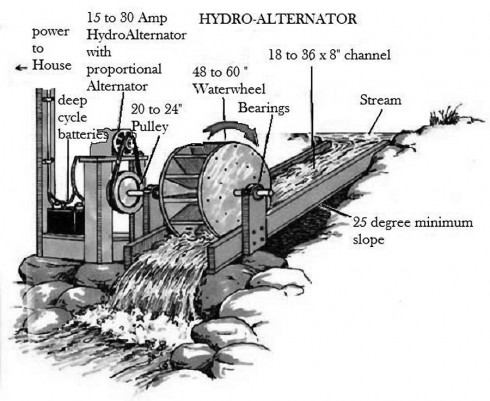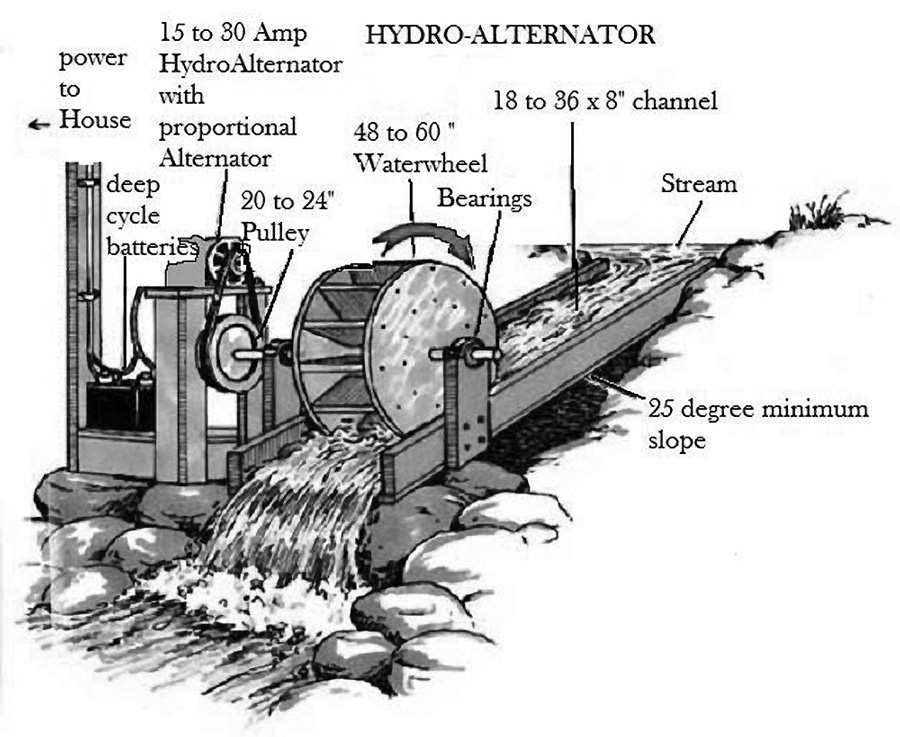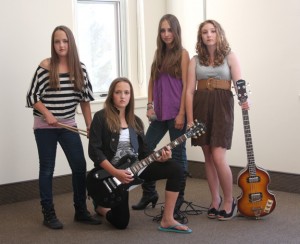By Michael Brown
Most hydropower plants are conventional in design, meaning they use one-way water flow to generate electricity. There are two categories of conventional plants, run-of-river and storage plants. Run-of-river plants use little, if any, stored water to provide water flow through the turbines.
Micro hydro power is probably the least common of the three readily used renewable energy sources, but it has the potential to produce the most power, more reliably than solar or wind power if you have the right site. This means having access to a river or creek that has a high enough flow to produce usable power for a good part of the year.

Many creeks and rivers are permanent, i.e. they never dry up, and these are the most suitable for micro-hydro power production.
A micro hydro turbine can take several forms, the most widely recognized of which would be the water wheel, used extensively for grain grinding up until this century. Waterwheels are still used in some situations that do not require a fast-spinning turbine, such as for pumping water. However, other type of turbines have become quite common.
The most common of these newer turbines is the Pelton wheel, which is basically a series of cups attached to a hub. A jet of water is aimed at the cups, and the resulting force on the cups causes the turbine to spin. Other types of turbines include the Turgo, Crossflow, and various axial flow turbines, in which the shaft through the center of the turbine runs in the same direction as the water flow, much like a boat propeller.
Water turbines have many advantages over solar panels or wind turbines, the most obvious of which is that they produce power continuously, 24 hours per day. However, they also have some associated problems or requirements. The most important of these is correct siting of the turbine and associated equipment so as to cause the least environmental damage possible. Placing a large concrete dam across a creek or river can do considerable damage to the surrounding ecology. A general rule of thumb is to not divert more than 20% of water flow of the creek through your turbine, and to return any diverted water back to the creek just below the turbine.
Other requirements that must be considered are flood protection for the turbine and how to transmit the power.
Turning water’s mechanical energy into electricity
Since the time of ancient Egypt, people have used the energy in flowing water to operate machinery and grind grain and corn. Hydropower played a major role in making the wonders of electricity a part of everyday life and helped spur industrial development. Hydropower continues to produce 24 percent of the world’s electricity and supply more than one billion people with power.
Evolution of Hydropower
The first hydroelectric power plant was built in 1882 in Appleton, Wisconsin to provide 12.5 kilowatts to light two paper mills and a home. Today’s hydropower plants generally range in size from several hundred kilowatts to several hundred megawatts, but a few mammoth plants have capacities up to 10,000 megawatts and supply electricity to millions of people.
Worldwide, hydropower plants have a combined capacity of 675,000 megawatts and annually produce over 2.3 trillion kilowatt-hours of electricity, the energy equivalent of 3.6 billion barrels of oil.
Hydropower in the U.S.
With a capacity of more than 92,000 megawatts, enough electricity to meet the energy needs of 28 million households, the U.S. is the world’s leading hydropower producer. Hydropower supplies nine percent of the country’s electricity and accounts for 49 percent of all renewable energy used in the U.S.
The nation’s largest hydropower plant is the 7,600 megawatt Grand Coulee power station on the Columbia River in Washington State. The plant is being upscaled to 10,080 megawatts, which will place it second in the world behind a colossal 13,320 megawatt plant in Brazil.
How Hydropower Works
Hydropower converts the energy in flowing water into electricity. The quantity of electricity generated is determined by the volume of water flow and the amount of “head” (the height from turbines in the power plant to the water surface) created by the dam. The greater the flow and head, the more electricity produced.
A typical hydropower plant includes a dam, a reservoir, penstocks (pipes), a powerhouse and an electrical power substation. The dam stores water and creates the head, penstocks carry water from the reservoir to turbines inside the powerhouse and the water rotates the turbines, which drive generators that produce electricity. The electricity is then transmitted to a substation where transformers increase voltage to allow transmission to homes, businesses and factories.
Types of Hydropower Plants
Conventional
Most hydropower plants are conventional in design, meaning they use one-way water flow to generate electricity. There are two categories of conventional plants, run-of-river and storage plants.
Run-of-river plants
These plants use little, if any, stored water to provide water flow through the turbines. Although some plants store a day or week’s worth of water, weather changes – especially seasonal changes – cause some run-of-river plants to experience significant fluctuations in power output.
Storage plants
These plants have enough storage capacity to off-set seasonal fluctuations in water flow and provide a constant supply of electricity throughout the year.
Pumped Storage
In contrast to conventional hydropower plants, pumped storage plants reuse water. After water initially produces electricity, it flows from the turbines into a lower reservoir located below the dam. During off-peak hours (periods of low energy demand), some of the water is pumped into an upper reservoir and reused during periods of peak demand.
Benefits
Hydropower is a clean, domestic and renewable source of energy. Micro-Hydropower plants provide inexpensive electricity and produce no pollution. And unlike other energy sources such as fossil fuels, water is not destroyed during the production of electricity, so it can be reused for other purposes.



